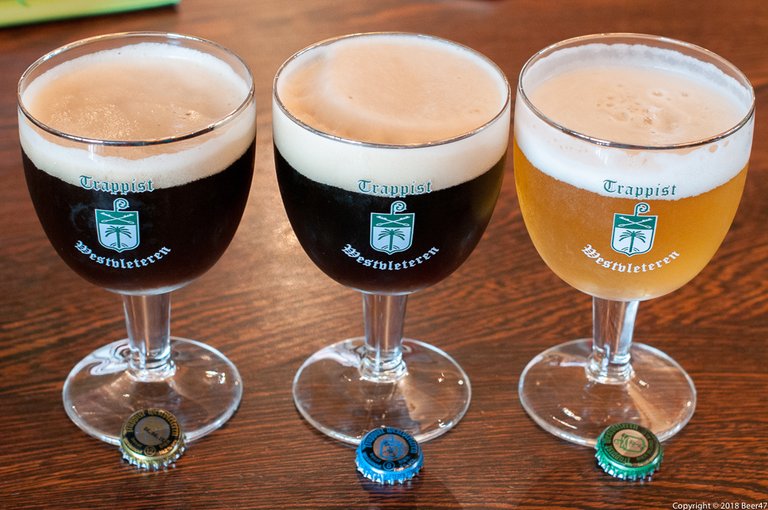
This week for #BeerSaturday I have provided an update to my comprehensive guide to Belgian Beer Styles, which I originally started in 2011. After re-reading the original, it had a few things that needed to be updated and added. I thought for the Steemit community, it would be worth it to put in the time to update the article and provide it here for you to read. Plus it was definitely missing some great photos. All of the photos in the article were taken in Belgium when I visited in 2009 or 2012.
“In Belgium, there are no styles,” proclaims Peter Bouckaert, Brewmaster of New Belgium Brewing. This statement exemplifies the individuality, non-conformity and creativity of Belgian brewers. Notwithstanding their individualism, Belgian brewers have strong ties to their history and tradition of brewing. What does all this mean to the Belgian beer drinker? It’s simple: you can have two beers that are technically the same style, and feature some similar attributes, but taste quite different. In this way, Belgian brewers have had a strong influence on brewers around the world, especially on the craft beer movement in America.
Despite the non-conformity of Belgian brewers and American brewers of Belgian-style beers, this style of beer does feature common attributes across different types. These categorizations are important because they create a language that brewers use to communicate with consumers what they’re about to drink. This guide introduces some of the most popular types of Belgian-style beers, and what you can expect from each type.

Independence
One attribute that many Belgian breweries pride themselves on is independence, which goes hand-in-hand with individuality and non-conformity. One of the most notable beers in the world is Westvleteren 12 brewed by monks from the Trappist Abbey of Saint Sixtus. Despite worldwide popularity they feel no need to sell more beer than is needed to fund their monastery and they have strict rules on buying their beer. It is my opinion that unless the brewery enjoys a certain degree of independence, it's not truly Belgian. Mega-corporate own-beers like Hoegaarden and Leffe are watered down versions of the real thing. AB-InBev has gone so far as to put artificial flavors in versions of Hoegaarden as if it were Corona or Bud Light. Lagers are not even a Belgian style, yet we see mega-corporate owned Stella Artois, Maes, and Jupiler. The more mega-corporate "Belgian" beer you drink, it becomes less likely that the smaller, and arguably better, breweries will survive.
Now, onto the beer!
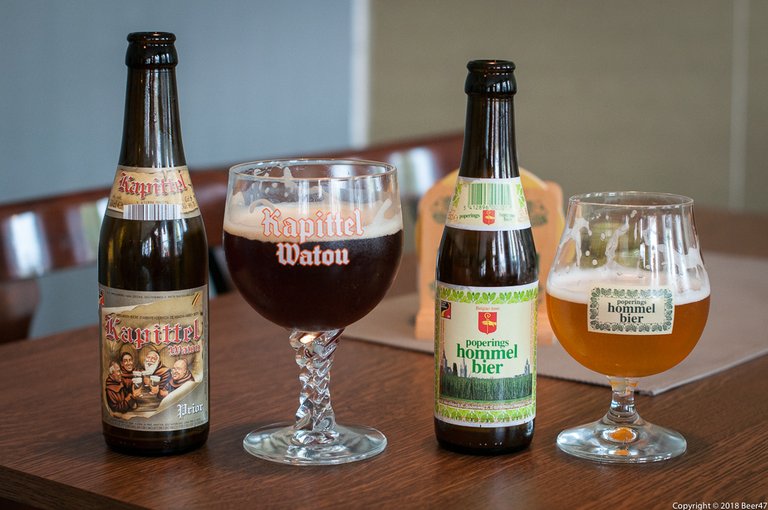
Common Features of Belgian-Style Beers
It’s important to establish that a few aspects of Belgian-style beer are common to most—but not all—beer styles. First are phenol aromas, which are produced by the yeast and are desirable primarily in Belgian styles and weizens. Phenols produce aromas that are usually described as clove-like, spicy, herbal, and, to some, bubblegum. In sour beer, the phenols express themselves more like farmyard or medicinal-type aromas, which, again, are desired qualities. Next are the fruity esters, also originating from the yeast, which create an aroma of banana or fresh citrus. Finally, many Belgian beers are bottle-conditioned, or re-fermented in the bottle, to such an extent that when you pour the beer, there may be an almost champagne-like effervescence. Despite these general commonalities, you can easily come across a Belgian-style beer with none of these qualities. That’s what makes exploring Belgian beer so great.
Holy Ale
When you think of Belgian beer, does that conjure up images of monks brewing beer? The fact of the matter is that there are only six breweries in Belgium, and one in the Netherlands, that make beer brewed by monks. These are the Trappist breweries.
Trappist Ale
Trappist ales are not actually a style of beer but rather a designation of who made the beer—in this case, Trappist monks. The designation “Trappist” on a beer label guarantees the following: the beer was produced at the monastery, monks manage the brewery and production, and the profits benefit the community and social services. For a few decades there were only seven Trappist breweries: Westmalle, Chimay, Rochefort, Orval, Achel, Westvleteren, and Koningshoeven (Netherlands). However, with the new popularity of craft and independent beer, there are a few more Trappist breweries in other countries: Stift Engelszell (opened 2012 in Austria), St. Joseph’s Abbey (opened 2013 in the United States), Brouwerij Abdij Maria Toevlucht (opened 2013 in the Netherlands), and Tre Fontane Abbey (opened 2014 in Italy).
Abbey Ale
Abbey beer or ales are not a style of beer and abbey ales are not brewed by monks. The term “abbey” is simply a marketing tool designed to sell the beer. For instance, Witkap features a monk on the bottle but it is neither brewed by nor for an abbey. Since 1999, however, there are a few breweries that have made special license arrangements with particular churches to brew beer in their name with a portion of the proceeds going back to the church or abbey. These are called “Recognized Belgian Abbey Beers” and are usually labeled as such.
So what’s the main difference between Trappist beer and Recognized Abbey beer? Trappist is a specific order of monks—the Cistercian Order of the Strict Observance—who brew the beer themselves. Abbey beer is made by commercial brewers.
Belgian Ales
White
Belgian-style white beers are more commonly known as witbier or bière blanche. This style nearly went into extinction in the 1950s when the last white beer-producing brewery closed its doors. Luckily Pierre Celis, who worked at a white beer-making brewery as a young man, started a new brewery in the 1960s to revive this style of beer.
This beer is referred to as “white” due to its appearance, which is unfiltered, hazy and very pale. Witbiers are brewed with as much as 40 percent wheat and commonly with spices such as coriander and orange peel, which impart a spicy and citrus aroma. The wheat in many witbiers is actually unmalted, as opposed to German-style wheat beers, which use malted wheat. This gives it a grainier aroma. The flavor has a moderate sweetness, nearly unnoticeable bitterness, and some brewers will use a brewing technique to add a touch of tartness, which enhances the citrus notes and makes it quite refreshing. The alcohol by volume is moderate at 4.5% to 5.5%.
White Belgian Beers to Try: Caracole Troublette, St. Bernardus Witbier
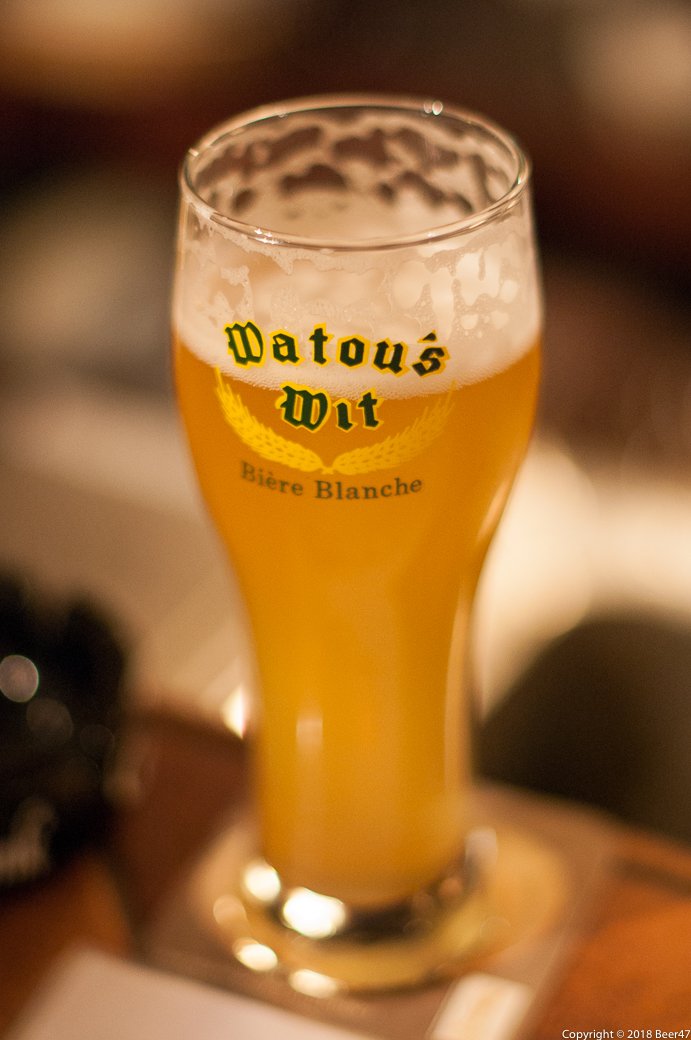
Saison
Saison means “season” in French. Saison, the beer, originally became popular in farmhouse breweries of Wallonia, the French-speaking region of Belgium. The beer was brewed and stockpiled in the cooler months, then used to refresh seasonal migrant workers during the summer. Brewing saison also gave famers something to do during the non-growing seasons while providing spent-grain feed that could then be used to feed livestock.
Saison is difficult to categorize as a style of beer. There are as many differences between individual saisons as there are similarities, if not more. In general, many saisons are light in color, but a few are dark, and still others are somewhere in between. The opacity ranges from hazy to somewhat clear. The aroma is dominated by the fruity esters, with aromas of banana or lemons and oranges. The spicy clove or pepper aroma from the phenols may or may not be present. The hop aroma in saisons is usually spicy and herbal. The flavor of the hops can be moderately spicy and bitter or more assertive. Saisons can be a little tart but (ideally) not so much that it overwhelms the other flavors. Although saisons aren’t sweet, some may have a small amount malt flavor to balance the other flavors. Like the aroma, the flavor may exhibit fruity, citrus notes, black pepper and sometimes the taste of added spices. Alcohol by volume ranges from low (4.5%) to high (8.5%), but shouldn’t result in a boozy aroma or taste. Saison exemplifies both the Belgian brewers’ dedication to tradition as well as their non-conformity of style specifications. Each brewer seems to have his own interpretation of what a farmhouse saison may have tasted like.
Saison Beers to Try: Saison Dupont, Saison Silly
Dubbel
Dubbel is a style that has been brewed by monks and secular breweries for centuries. The name is said to have originated from the style requiring twice the grain as a “regular” beer, but that doesn’t say much about the style beyond the fact that it is a strong beer. The red-to-dark brown color of dubbels comes from the use of dark candi sugar rather than dark roasted malts. The candi sugar imparts aromas and flavors of burnt sugar, raisins, or chocolate-caramel. Notes of herbs, plums, bananas, apples, spice, black pepper, and other earthy qualities can also be found in a dubbel. Despite a dry finish, the flavor of a dubbel generally has a malty sweetness due to the relatively low amount of hops used. The best dubbels are bottle-conditioned, giving the beer a strong amount of carbonation. The alcohol by volume is on the higher side, typically ranging from 6% to 7.5% but shouldn’t be very detectable in the flavor or aromas.
Dubbel Beers to Try: Westmalle Dubbel, Chimay Red, Maredsous 8, Westvleteren 8
Note: To help remember the difference between dubbel and tripel, just use this simple mnemonic device: dubbel is darker.
Tripel
Similar to dubbel, tripel (aka trippel) is said to get its name from requiring three times the amount of grain as a typical beer. This style has been brewed in Belgium since 1932, but was popularized by Westmalle Brewery in 1956. Tripel is deep yellow to golden in color with a frothy white head that usually leaves lacing on the glass. The aroma can be spicy, floral, perfumy and fruity with notes of orange or banana. The flavor can be lightly sweet with a light malt flavor. The combination of fruity aromas and flavors, coupled with the low-to-moderate hop bitterness, can make this beer seem a bit more malty-sweet than it technically is. The hop flavor is low to moderate and is expressed with a spicy or herbal quality. Despite having an alcohol by volume of 7% to 10%, a good tripel should not be boozy or solvent. Again, despite the high gravity of this beer, it should be medium-to-light-bodied, which the brewer achieves by adding sugar to the brew kettle.
Trippel Beers to Try: Westmalle Tripel, Chimay White, Tripel Karmeliet, Witkap Pater Tripel, Van Steenberge Piraat
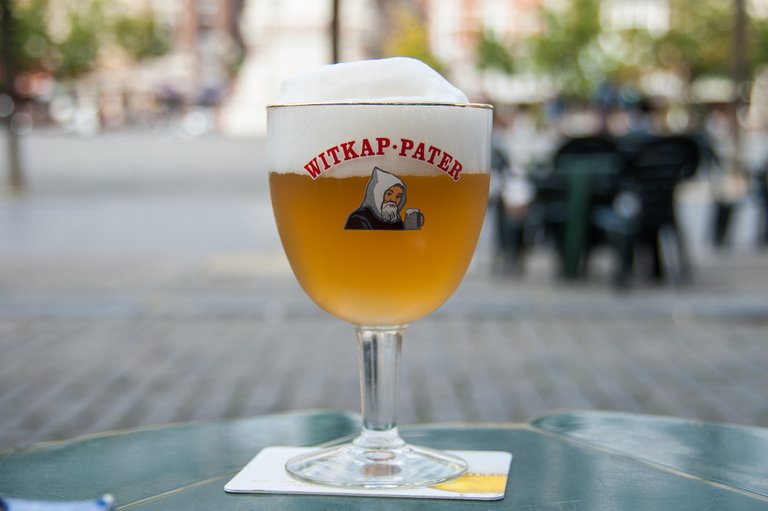
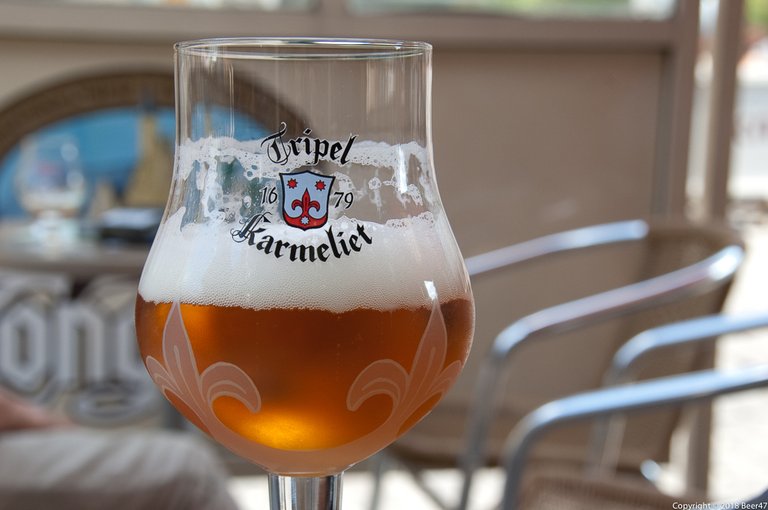
Strong Blond Ale
The strong blond ale was developed by Moortgat brewery, the makers of Duvel, after World War II, in order to compete with pilsners. A Belgian-style strong blond ale very closely resembles a tripel but the flavor is less grainy, less sweet, and a touch more bitter. The color ranges from bright yellow to golden, which is generally lighter than a tripel. The finish is also drier than a tripel but just as highly carbonated and sometimes more so. Strong blond ales are often hoppier than tripels. The hop aroma can be floral, perfumy and herbal, due to the European hops used in the brewing process. Just like tripels, this style is also fruity and spicy. The alcohol by volume ranges from 7.5% to 10%, which is more noticeable but doesn’t distract from the flavors of the beer and isn’t solvent-like.
A “regular” blond ale or a Belgian pale can be generalized as a weaker version of the strong blond ale.
Strong Blond Ales to Try: Duvel, La Chouffe Achouffe, Dupont Moinette, Delerium Tremens
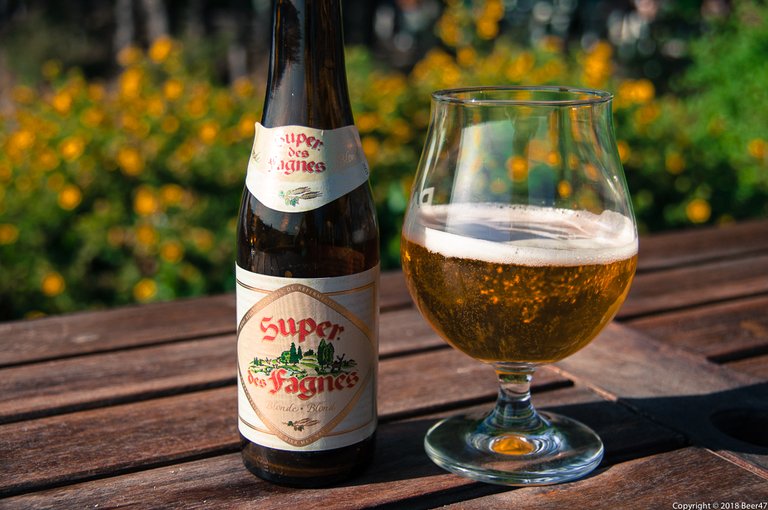
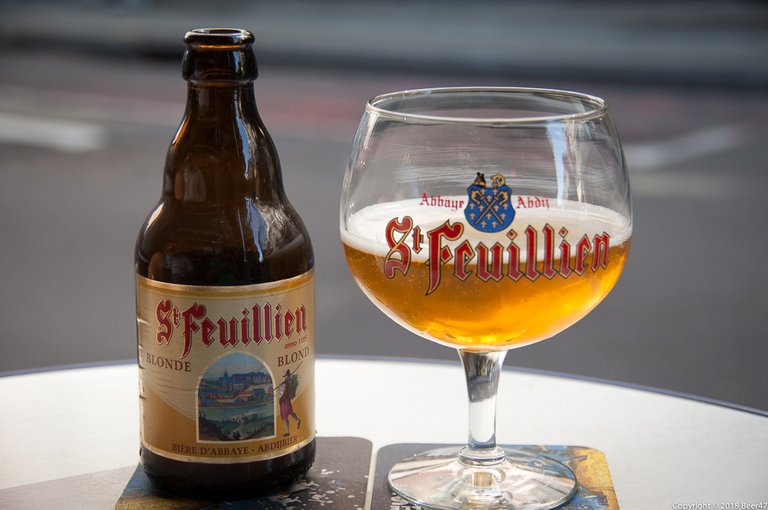
Strong Dark Ale
A Belgian strong blond ale may be a close cousin to a tripel but a Belgian strong dark ale is not closely related to a dubbel. One important distinction is that the strong dark ale often uses roasted malt, which achieves a darker color and more toasty flavor than a dubbel. The color of strong dark ale ranges from deep amber to dark brown with a dense foamy head. The aroma may be described as rich, sweet, toasted, bready, caramel-like, peppery, herbal, with dark fruit notes like prunes, raisins, plums or figs. The flavor profile is similar to the aroma and is moderately sweet and malty with a low-to-moderate amount of bitterness, which provides balance and sometimes a spicy quality. Despite the complexity of flavors and aromas, a good Belgian strong dark ale will meld all of these attributes harmoniously. This style is very strong with an alcohol by volume of 8% to 11%.
Strong Dark Ales to Try: Westvleteren 12, St. Bernardus Abt. 12, Chimay Blue
Sour Ales
A discussion of sour and wild ales could be a distinct discussion unto itself, so this will be a very brief primer. Sour ales and other beers made using wild fermentation techniques can be difficult to categorize, but these are two categories that you can start with.
Flanders Red and Brown Ale
The Flanders red and brown ales can most easily be summed up as complex, sweet, and sour, with a long history. Both of these styles are historically aged in wooden barrels for an extended period of time, which can add to the complexity of the beer. These beers range from deep red to brown with good clarity and a pale head. The aroma may contain any or all of the following: oak, dark fruit, black cherries, currants, dates, chocolate, vanilla, toffee or caramel. The sour aroma of the beer ranges from sour citrus to a sweet balsamic vinegar. The flavor is a nice blend of sweet and sour with many of the fruity aromas also making an appearance. Hints of spicy flavors may also be detected. This style of beer has very little hop bitterness and no perceived hop flavors. Alcohol by volume ranges from 4% to 8%.
There are two main differences between Flanders red and brown ales. The brown ale has a deeper color and more of a caramel and nutty flavor. The red ale has more of a barnyard or cheese rind aroma from the Brettanomyces (aka Brett) yeast. Flanders brown ales are less common and are also known as oud bruin.
Flanders Red Ales to Try: Rodenbach Grand Cru, Duchesse de Bourgogne, Monk’s Café Flanders Red Ale.
Flanders Brown Ales to Try: Liefman’s Oud Bruin.
Lambic and Gueuze
Lambic is a spontaneously fermented beer made from un-malted wheat, malted barley and aged hops. It’s literally left out in large, open vats to collect the wild yeast in the air. Lambic is usually brewed in the cooler months, much in the tradition of farmhouse brewing, but in this case the cooler weather is to ensure that only the desired wild yeast ferments the beer. After fermentation, lambic can be aged in barrels anywhere from six months to five years. Lambic is not blended.
The base color of lambic is pale to golden yellow. The aroma is quite acidic, with earthy notes of barnyard, hay, horse blanket, musk, attic dust or cheese rind. It may also express qualities of the oak barrels. Young examples are tart and sour but older versions have a much better balance of sour and malty characteristics. Flavors can vary greatly but may include apple, citrus or honey. Lambics have little to no hop bitterness or flavor. Furthermore, the hops in lambic styles function mostly for anti-bacterial purposes rather than flavor.
Gueuze, also known as oud geueze, is blended using lambics that have been aged in oak barrels for one, two and three years. The brewmaster determines which levels are required to produce the ideal product. The flavors and aromas are similar to lambic but are more balanced and refined.
Fruit lambic is similar to gueuze in that it is blended. The fruit is generally added halfway through the aging process. The lambic will take on many of the characteristics of the fruit that was added. The younger the lambic, the sweeter and more prominent the fruit will be. The longer it is aged, however, the more the lambic flavors will be expressed. A word of caution: some beer labeled fruit lambic actually isn’t true lambic—some brewers use flavored syrup instead of real fruit. Be cautious about what you’re trying.
Note: The terms “lambic” and “gueuze” also usually indicate that the beer came from Belgium.
Examples to Try:
Unblended lambic: Cantillon Grand Cru Bruocsella.
Fruit lambic: Boon Oude Kriek, Cantillon Kriek, Cantillon Rose de Gambrinus, Cantillon St. Lamvinus, Hanssens Oude Kriek.
Oud gueuze: Boon Oude Gueuze, Cantillon Gueuze.
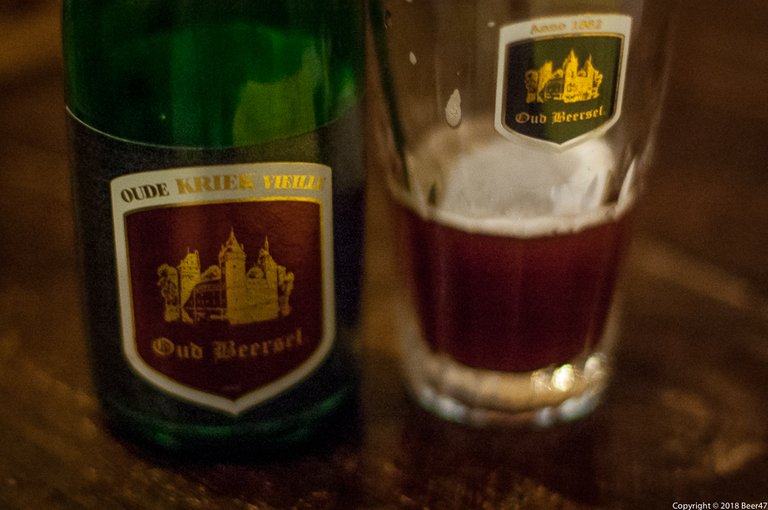
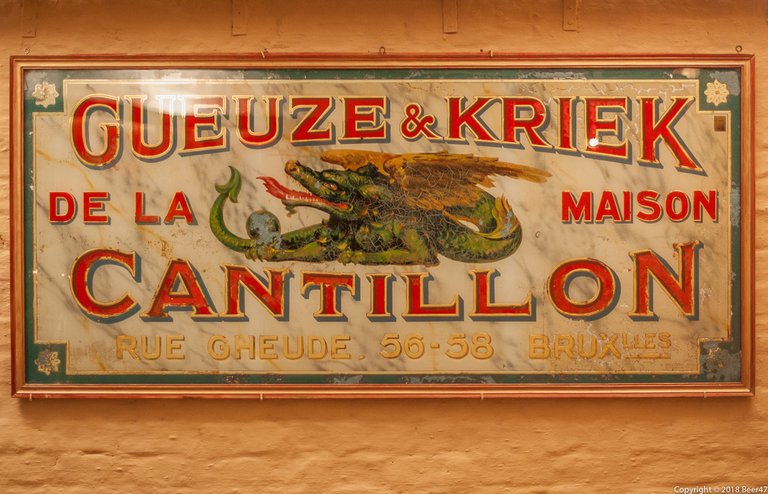
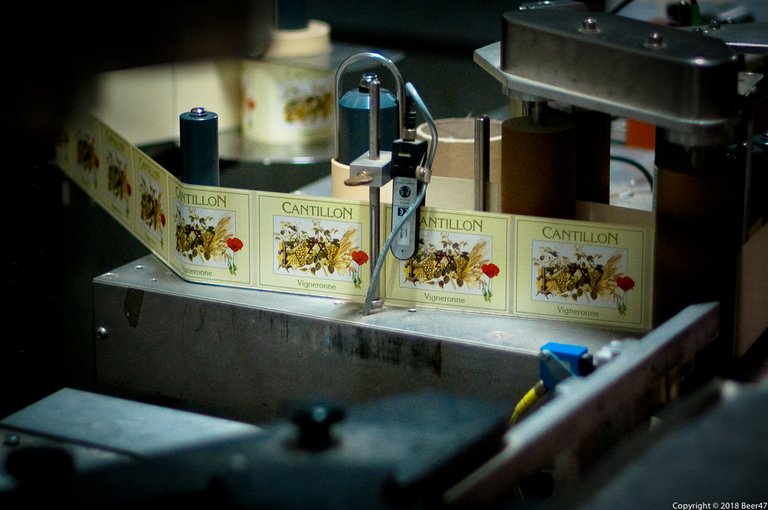
Other Styles
Other Belgian styles include quadrupel, which is even stronger than dubbels and tripels; amber ale, which is somewhere between a blond and a brown; and winter, seasonal or Christmas beers, which are usually strong and brewed with spices.
Although Belgian brewers have greatly influenced brewers around the world, American, English and Scottish brewers in particular have also influenced Belgian brewers. This is definitely apparent with the variety of other styles brewed by Belgian brewers. For instance, the Belgian-style IPA—a style that usually includes a healthy dose of American hops, like Amarillo, which imparts aggressive hop aroma and bitterness that complements traditional Belgian ingredients and flavors. Other styles include Belgian-style stout and Belgian-style Scotch ale. A few breweries even make a Belgian-style souts, which has attributes of both a dubbel as well as an imperial stout.
Beyond these, there are many other Belgian beer styles that are less well defined, and which fit in between, outside, and all around the aforementioned more popular styles.

All photos and materials are original works. All rights reserved.
Copyright © 2018 by David Jensen and beer47.com
Hi! I am a robot. I just upvoted you! I found similar content that readers might be interested in:
https://www.huffingtonpost.com/Menuism/belgian-beer_b_1166350.html
Yes, @cheetah, I wrote that in 2011 and updated it for Steemit with a new intro, a new section on independence, and a few new pieces of information as well as photos, photos, and more photos. As per my agreement with Menuism, I own rights to that content.
Gorgeous, CHEERS !
Wow - very comprehensive guide! Thanks for sharing.
I’ve always been a big fan of Belgian style beers. Thank you for the post! Upvoted and resteemed!
World of Photography Beta V1.0
>Learn more here<
You have earned 5.05 XP for sharing your photo!
Daily photos: 1/2
Daily comments: 0/5
Multiplier: 1.01
Server time: 05:42:35
Total XP: 94.15/100.00
Total Photos: 18
Total comments: 2
Total contest wins: 0
Follow: @photocontests
Join the Discord channel: click!
Play and win SBD: @fairlotto
Daily Steem Statistics: @dailysteemreport
Learn how to program Steem-Python applications: @steempytutorials
Developed and sponsored by: @juliank
@beverages I forgot to use #bevhappyhour but I've corrected that. If you could resteem this, I would appreciate it. Thanks!
@buzzbeergeek I'd really like to spread this article around Steemit because I think it would be great to educate people about Belgian beer styles. Would you mind resteeming it? (No votes needed I just want that view count to go up).
This is awesome, thanks for putting the time into explain all this, it;s very informative! I hope to go Belgium some day...for a huge beer fan I bet it would be paradise!
What a wonderfol post.
Thanks for your update of that work
Congratulations @beer47! You have completed some achievement on Steemit and have been rewarded with new badge(s) :
Click on any badge to view your own Board of Honor on SteemitBoard.
For more information about SteemitBoard, click here
If you no longer want to receive notifications, reply to this comment with the word
STOP